Synology orporated RT1900AC Wireless Router User Manual Synology DiskStation User s Guide
Synology Incorporated Wireless Router Synology DiskStation User s Guide
Manual

Synology wireless router RT1900ac
Quick Installation Guide
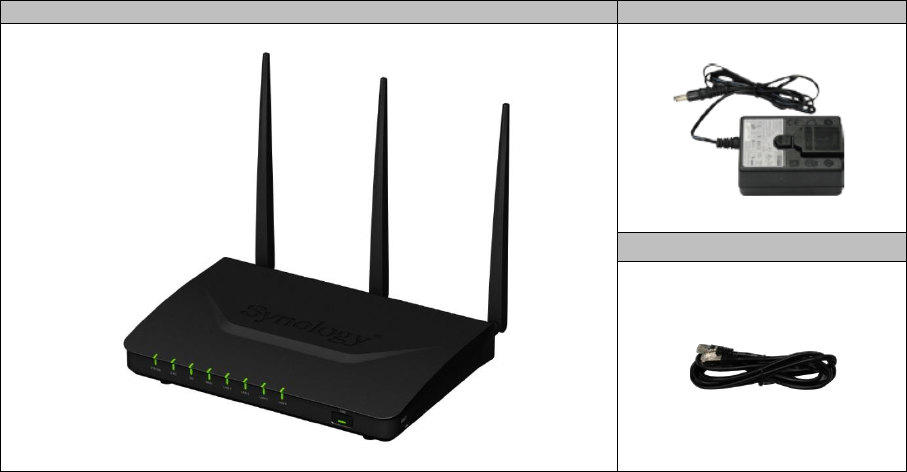
Chapter 0: Before You Start
Thank you for purchasing this Synology product! Also, make sure to read the safety instructions carefully to
avoid harming yourself or damaging your RT1900ac.
Package Contents
Main unit x 1
AC power adapter x 1
RJ-45 LAN cable x 1
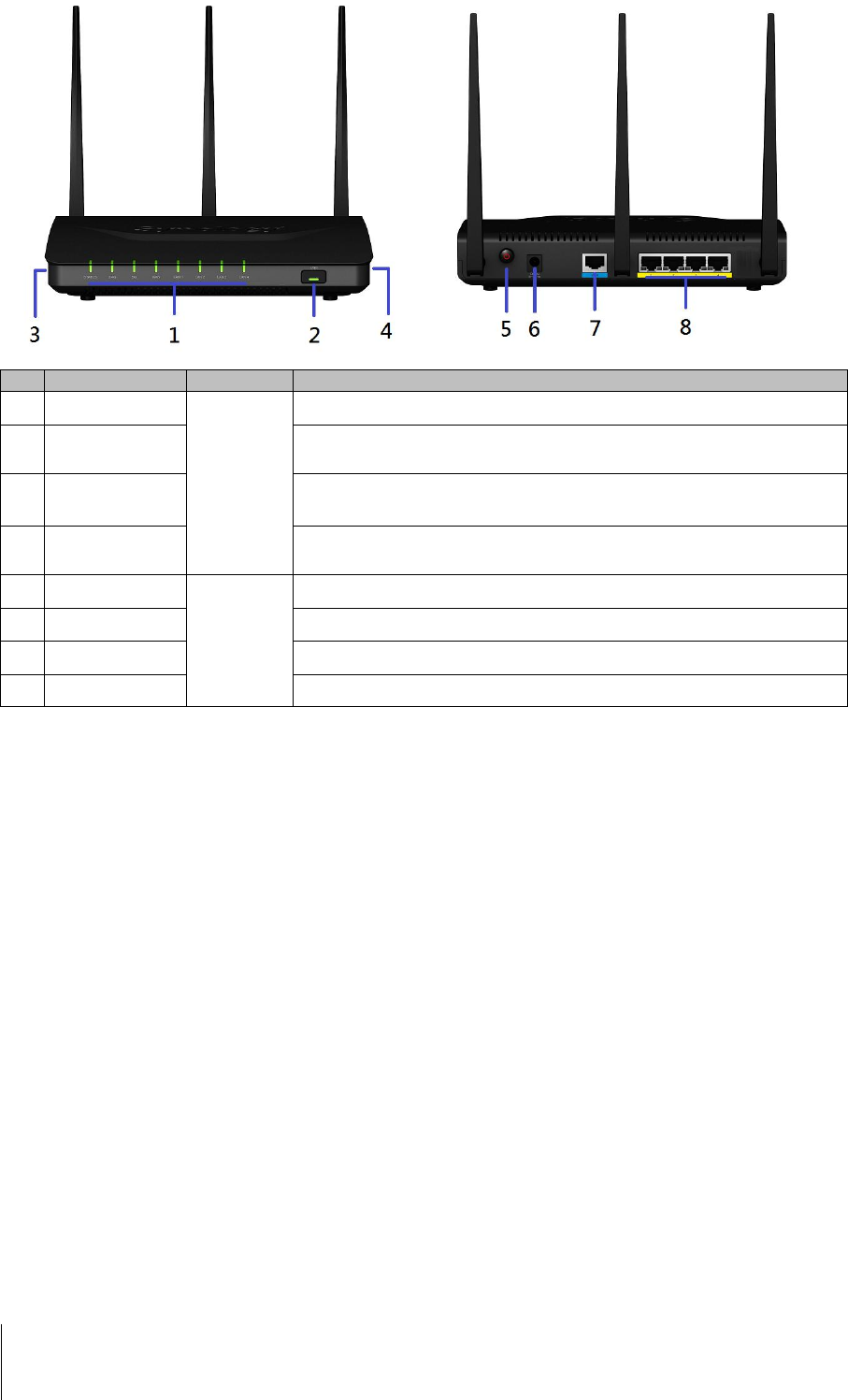
Synology router at a Glance
No.
Article Name
Location
Description
1)
Status Indicator
Front Panel
Displays the system, WAN, LAN, wireless status of RT1900ac.
2)
SD/USB
eject button
Push to eject all SD and USB devices
3)
RF switch and
WPS Button
The WPS button is used to configure Wi-Fi Protected Setup.
The RF switch is used to turn on/off Wi-Fi.
4)
USB Port and
SD Card Slot
Connect external USB storage device and SD card.
5)
Power Button
Back Panel
Press to turn on/off RT1900ac.
6)
Power Port
Connect the AC power adapter here.
7)
WAN Port
Connect network cables here.
8)
LAN Port
Connect network cables here.
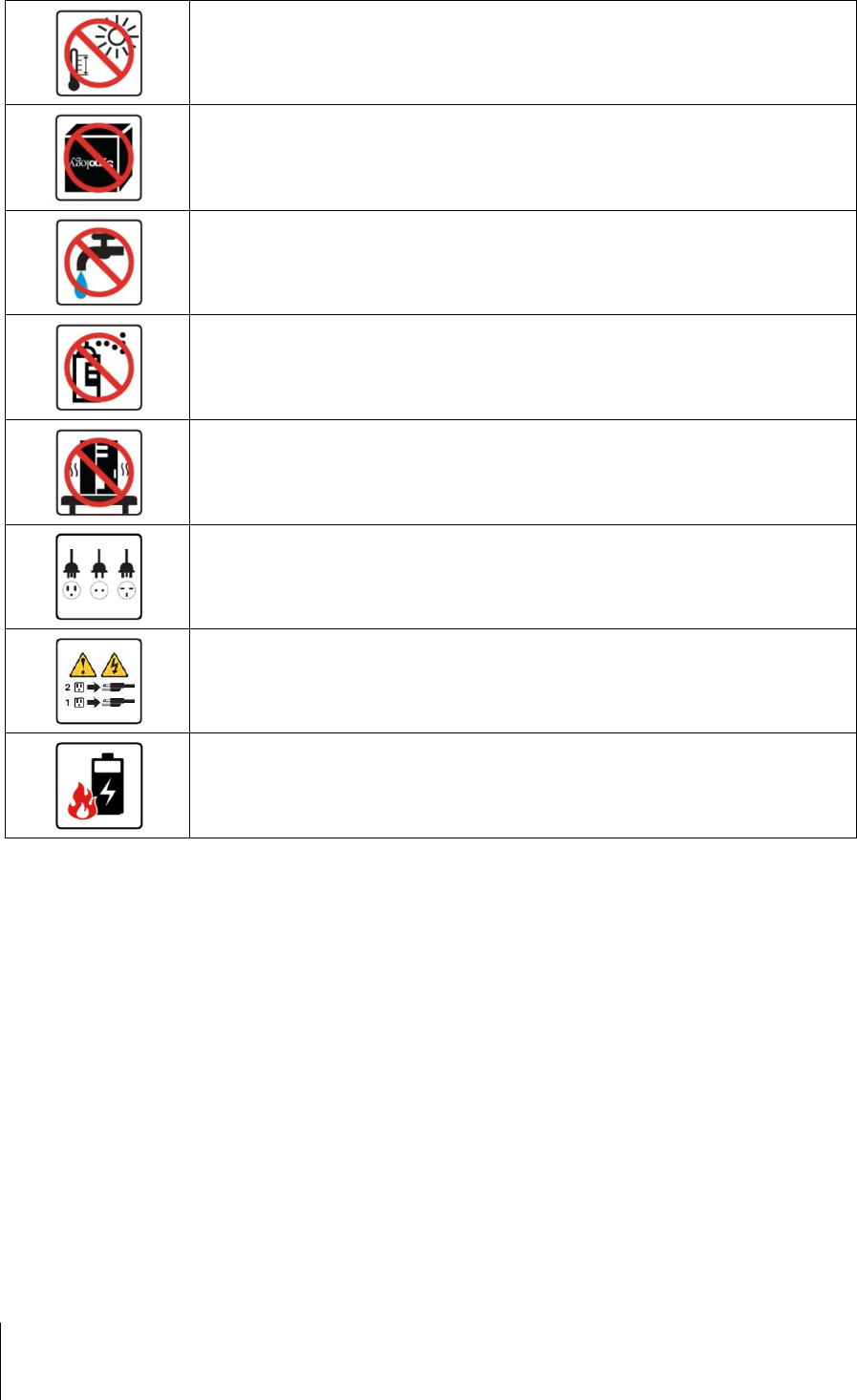
Safety Instructions
Keep away from direct sunlight and from chemicals. Make sure the environment does not
experience abrupt changes in temperature or humidity.
Place the product right side up at all times.
Do not place near any liquids.
Before cleaning, unplug the power cord. Wipe with damp paper towels. Do not use chemical or
aerosol cleaners.
To prevent the unit from falling over, do not place on carts or any unstable surfaces.
The power cord must plug in to the correct supply voltage. Make sure that the supplied AC
voltage is correct and stable.
To remove all electrical current from the device, ensure that all power cords are disconnected
from the power source.
Risk of explosion if battery is replaced with an incorrect type. Dispose of used batteries
appropriately.
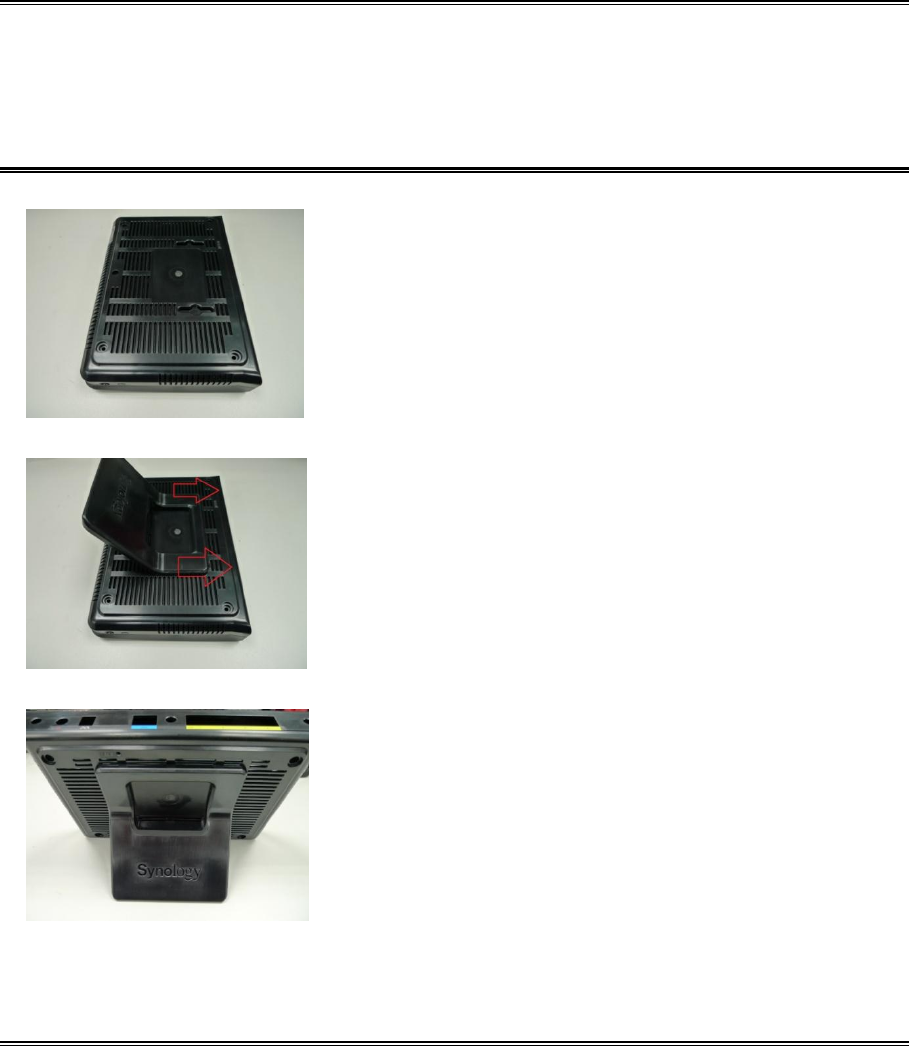
Chapter 1: Hardware Setup
Step
1 Connect your devices.
2 Launch the Synology Assistant and follow the web instructions to setup.
3 Setup is completed.
Mount the stand
1 Put your RT1900ac upside down.
2 Insert the stand’s mounting hooks to the mounting holes and push as the arrowhead.
3 Your RT1900ac is ready to stand.
Learn More
Congratulations! Your RT1900ac is now ready for action. For more information or online resources about your
RT1900ac, please visit www.synology.com.

Federal Communications Commission (FCC) Statement
You are cautioned that changes or modifications not expressly approved by the part
responsible for compliance could void the user’s authority to operate the equipment.
This equipment has been tested and found to comply with the limits for a Class B digital device,
pursuant to part 15 of the FCC rules. These limits are designed to provide reasonable protection
against harmful interference in a residential installation. This equipment generates, uses and can
radiate radio frequency energy and, if not installed and used in accordance with the instructions,
may cause harmful interference to radio communications. However, there is no guarantee that
interference will not occur in a particular installation. If this equipment does cause harmful
interference to radio or television reception, which can be determined by turning the equipment
off and on, the user is encouraged to try to correct the interference by one or more of the
following measures:
-Reorient or relocate the receiving antenna.
-Increase the separation between the equipment and receiver.
-Connect the equipment into an outlet on a circuit different from that to which the receiver is
connected.
-Consult the dealer or an experienced radio/TV technician for help.
For product available in the USA/Canada market, only channel 1~11 can be operated.
Selection of other channels is not possible.
When suing IEEE 802.11a wireless LAN, this product is restricted to indoor use, due to its
operation in the 5.15 to 5.25GHz frequency range. The FCC requires this product to be used
indoors for the frequency range of 5.15 to 5.25GHz to reduce the potential for harmful
interference to co channel mobile satellite systems.
High-power radar is allocated as the primary user of the 5.25 to 5.35GHz and 5.65 to 5.85GHz
bands. These radar stations can cause interference with and/or damage to this device.
This device complies with Part 15 of the FCC Rules. Operation is subject to
the following two conditions:
1) this device may not cause harmful interference, and
2) this device must accept any interference received, including interference that may cause
undesired operation of the device.
FCC RF Radiation Exposure Statement:
This equipment complies with FCC radiation exposure limits set forth for an uncontrolled
environment. This equipment should be installed and operated with minimum distance 20cm
between the radiator & your body. This transmitter must not be co-located or operating in
conjunction with any other antenna or transmitter.
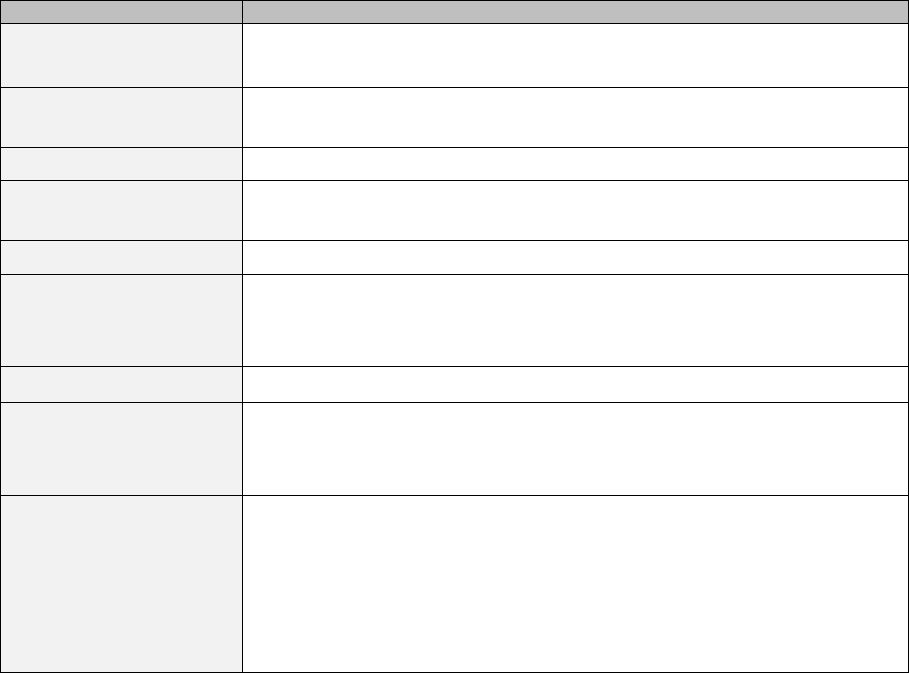
Appendix 錯誤! 數字無法以指定格式顯示。: Specifications
Item
RT1900ac
External Device Ports
‧USB 3.0 x 1
‧SD Card x 1
LAN Port
WAN x 1
LAN x 4
Size (H x W x D) (mm)
38 x 205 x 138
Weight (g)
530 (with antenna x3)
460 (without antenna)
Antenna
x 3
Supported Clients
‧Windows XP onward
‧Mac OS X 10.5 onward
‧Ubuntu 9.04 onward
Agency Certifications
‧FCC Class B ‧CE Class B ‧BSMI Class B
Language Localization
‧English ‧Deutsch ‧Français ‧Italiano ‧Español ‧Dansk ‧Norsk ‧Svensk
‧Nederlands ‧Русский ‧Polski ‧Magyar ‧Português do Brasil ‧Português Europeu
‧Türkçe ‧Český ‧日本語‧한국어‧繁體中文‧简体中文
Environment Requirements
‧Adapter AC input Voltage: 100 to 240V AC
‧Adapter AC input Frequency: 50 to 60Hz
‧Operating Temperature: 40 to 104˚F (5 to 40˚C)
‧Storage Temperature: -5 to 140˚F (-20 to 60˚C)
‧Relative Humidity: 5% to 95% RH
‧Maximum Operating Altitude: 6,500 feet (2,000 m)
Note: Model specifications are subject to change without notice. Please refer to www.synology.com for the latest information.